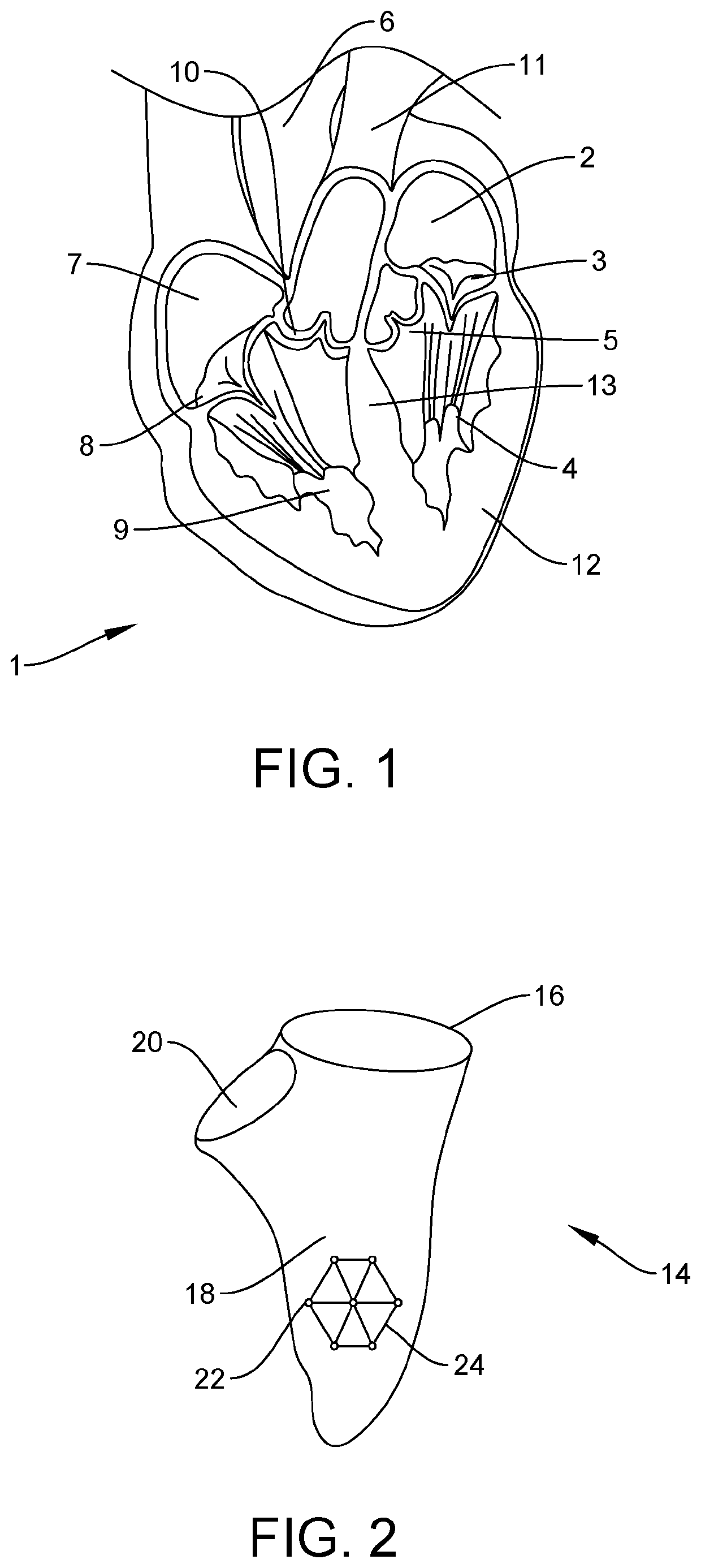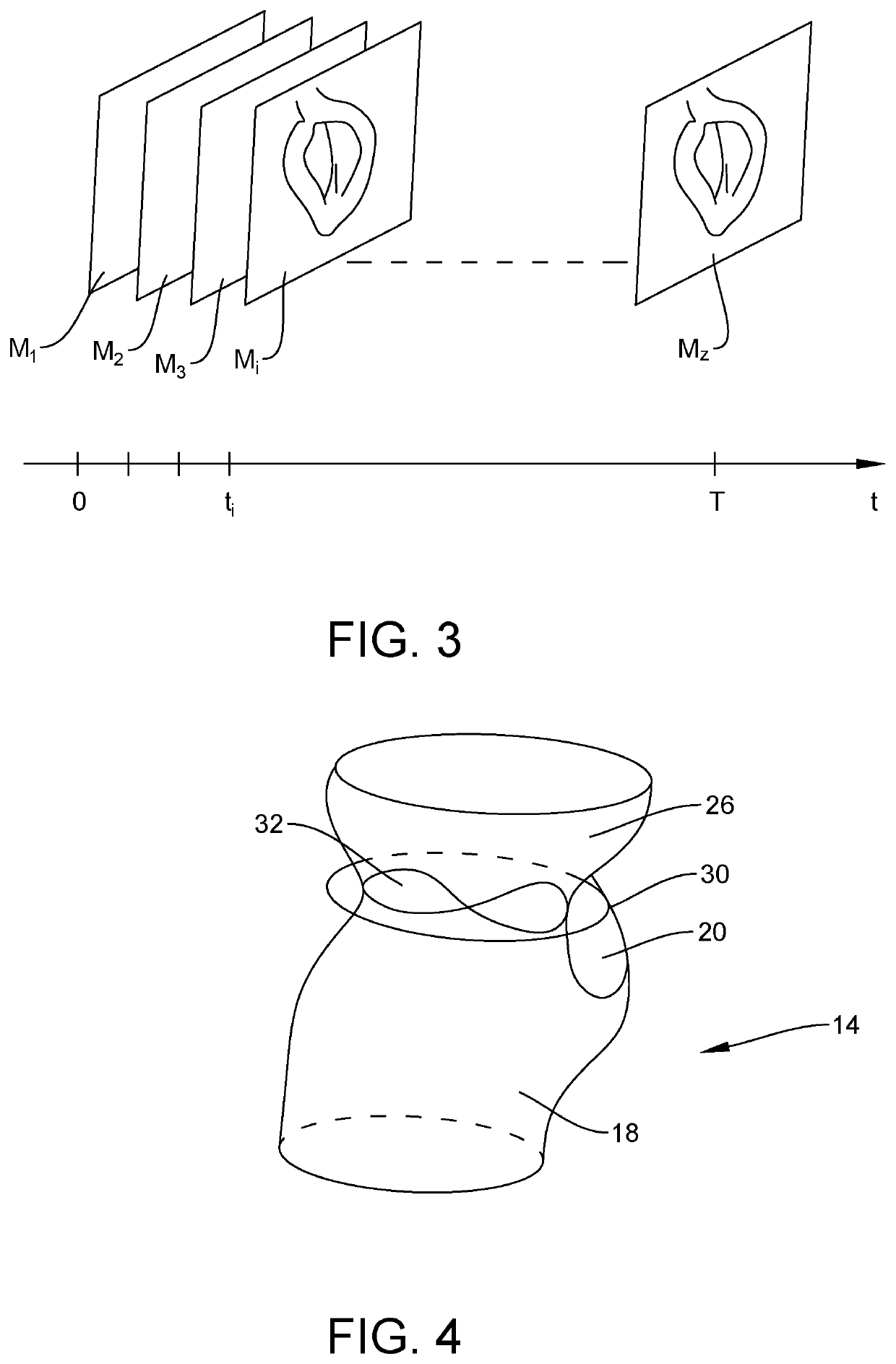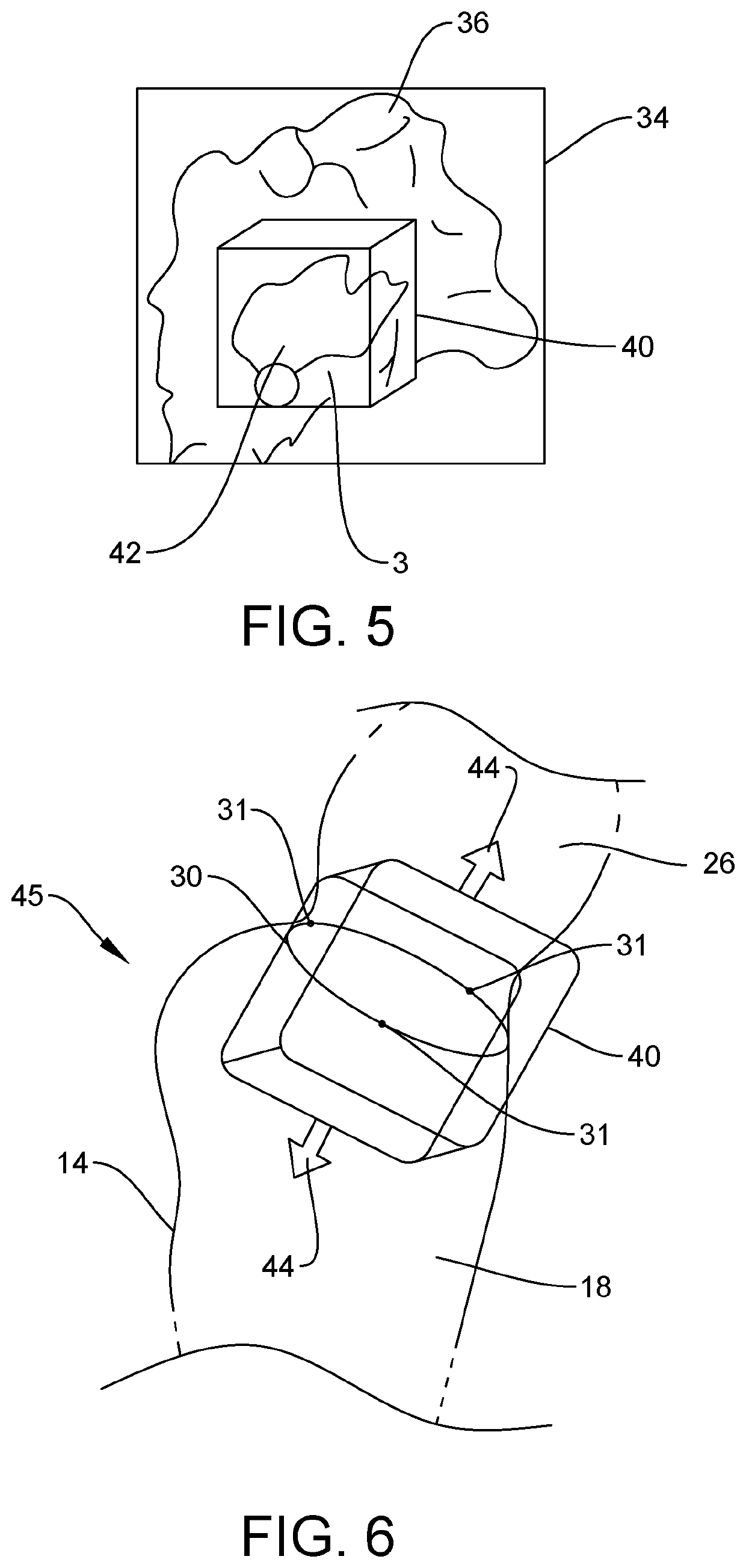Method of visualizing a dynamic anatomical structure
a dynamic anatomical and structure technology, applied in image analysis, instruments, image enhancement, etc., can solve the problems of not being suited for all pathologies, omnipresent risk of misinterpretation of relative spatial relationships between anatomical structures represented on medical 3d, and user no longer critically questioning or verifying the volume-rendered representation of anatomy, so as to minimize the risk of image data misinterpretation
- Summary
- Abstract
- Description
- Claims
- Application Information
AI Technical Summary
Benefits of technology
Problems solved by technology
Method used
Image
Examples
Embodiment Construction
[0077]In order to better visualise the preferred application of inventive visualisation method and user interface, FIG. 1 illustrates the structure of the human heart 1. The blood coming from the lungs flows into the left atrium 2 and from there through the mitral valve 3 into the left ventricle 4. From there, it is pumped through the aortic valve 5 into the aorta 6. This part is also termed left ventricular outflow tract (LVOT). The blood coming from the body flows into the right atrium 7 and is pumped through the tricuspid valve 8 into the right ventricle 9. From there, it is pumped through the pulmonary valve 10 into the pulmonary artery 11. Heart wall 12 is made of muscular tissue surrounding the heart chambers 2, 4, 7 and 9. The left and right ventricles are separated by the septum 13. It is evident from FIG. 1 that the heart has a complex shape, and in addition is constantly moving with the heartbeat, i.e. it is a dynamic anatomical structure. Thus, a visualisation of shapes s...
PUM
 Login to View More
Login to View More Abstract
Description
Claims
Application Information
 Login to View More
Login to View More - R&D
- Intellectual Property
- Life Sciences
- Materials
- Tech Scout
- Unparalleled Data Quality
- Higher Quality Content
- 60% Fewer Hallucinations
Browse by: Latest US Patents, China's latest patents, Technical Efficacy Thesaurus, Application Domain, Technology Topic, Popular Technical Reports.
© 2025 PatSnap. All rights reserved.Legal|Privacy policy|Modern Slavery Act Transparency Statement|Sitemap|About US| Contact US: help@patsnap.com



